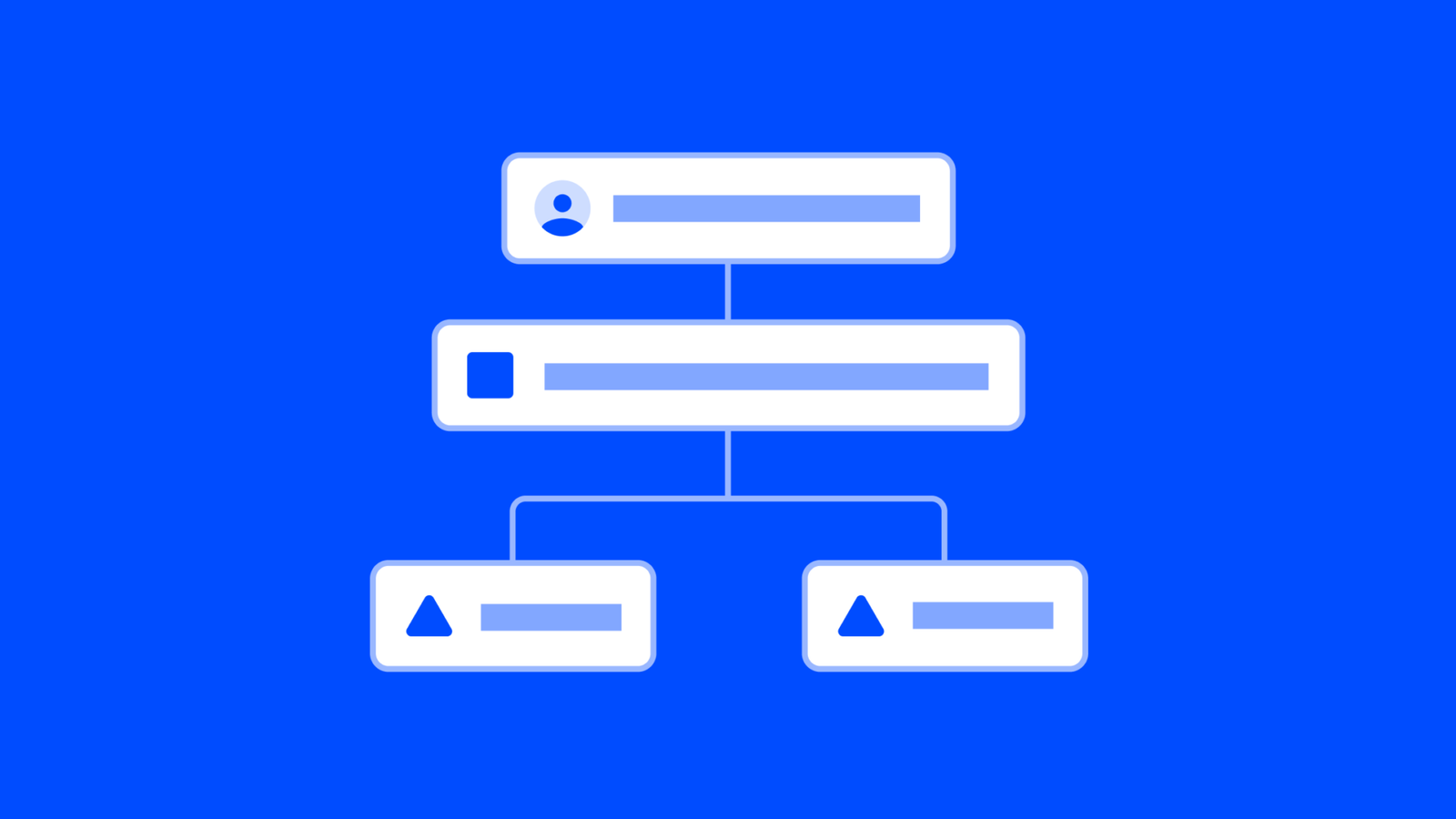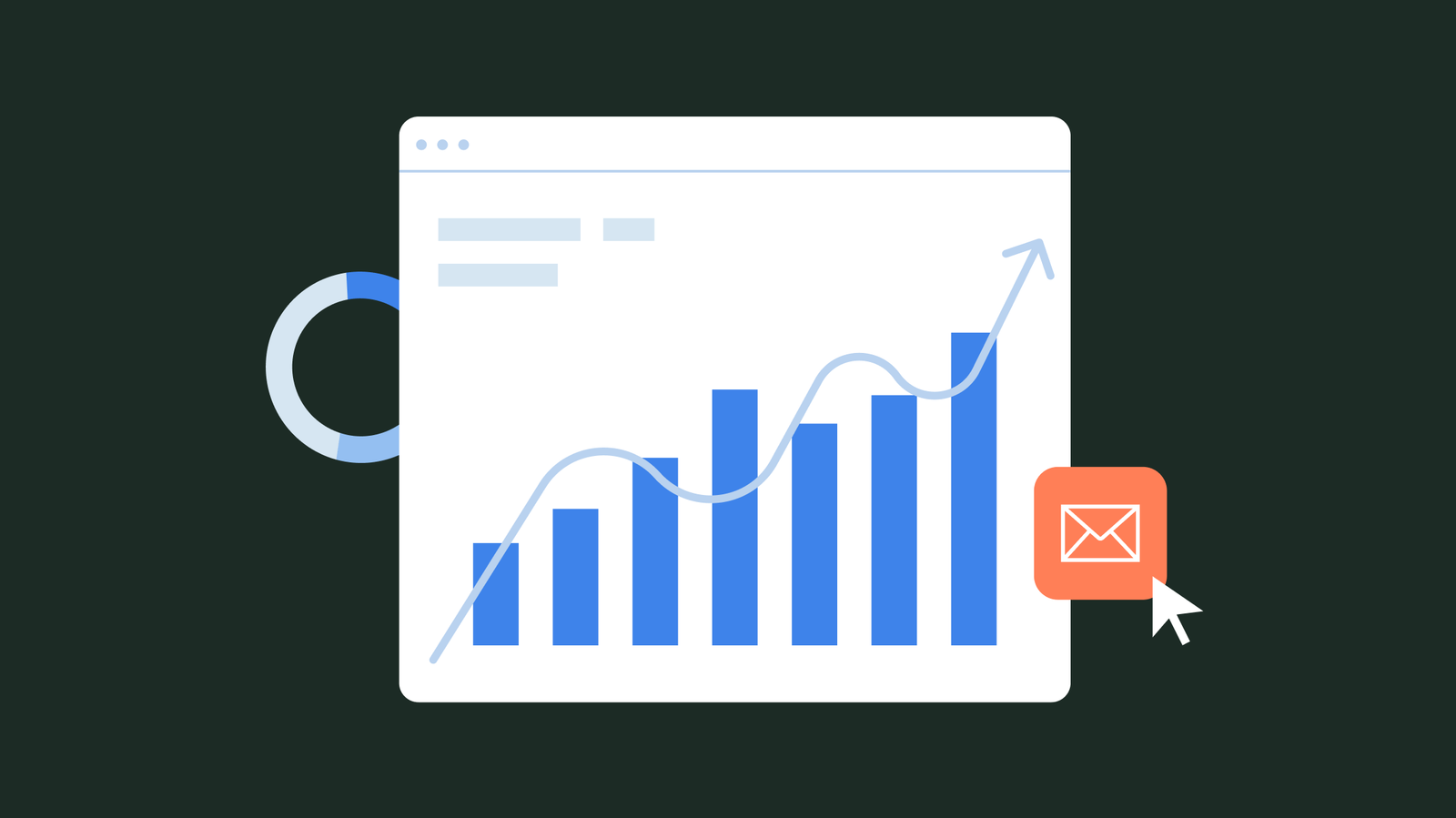Chatbots are one of the most popular new messaging channels today. And the little chat bubble you spot on so many websites has become popular for a reason, even though on a wide range of sites, most people are used for talking to a real person.
By simulating a text chat with a human, chatbots work for various business use cases, from automating customer conversations to connecting potential customers to salespeople.
Integrating them into your business processes can help you engage with customers in a whole new way. In this article, we’ll explore the best chatbot tools and examples of conversational marketing to help you get the most out of your bot so you can leverage this emerging channel for maximum impact.
What is a chatbot?
A chatbot is a software designed to simulate human conversation with website visitors. At its core, a chatbot is a messaging platform that automates the dialogue between a customer and a business. Chatbots are often used in customer service, ecommerce marketing, sales, and marketing to reduce human intervention and help users get answers to their questions more quickly.
Why use a chatbot?
When customers have a question, they want answers fast. Chatbots are an effective messaging channel to quickly provide information and answers without needing a support person for every customer visiting a website.
It’s also an excellent way for businesses to avoid answering the same simple questions repeatedly while simultaneously increasing customer satisfaction with instant answers. You can create the perfect responses once, and a chatbot can answer those common questions every time without needing a human agent.
Chatbots can also automate and streamline processes, such as taking orders, scheduling demos, and collecting customer feedback. An example is if customers need to chat with the customer support team.
In that case, chatbots are great at recognizing the need for human intervention and connecting visitors to the right people who can help. Chatbots save time and resources, while also improving user experience with speedier responses and resolutions.
What types of chatbots exist?
Generally, you can split chatbots into two types: artificial intelligence (AI) powered chatbots and rule-based chatbots. You may already be familiar with chatbots if you have ever used voice platforms like Google Assistant, Alexa, and Siri. However, in this article, we'll focus on text-based conversions in web browsers and mobile devices.
Rule-based chatbots
Marketing, sales, and customer service agents frequently use rule-based chatbots. These chatbots rely on predefined decision trees and provide pre-written responses. Users are presented with options to click, and the bot will answer them and provide follow-up options.
These chatbots are inexpensive and quick to implement. However, with thoughtful conversational design and in-depth customer research, these chatbots can provide a great customer experience.
AI-powered chatbots
Chatbots that use an artificial intelligence platform can understand and respond to natural language questions or requests and use machine learning algorithms to learn from user inputs. They can analyze and interpret complex questions to generate an appropriate response, but these AI-powered chatbots take a lot of resources and time to implement correctly.
That said, for some businesses, the investment is worth it because it can be used to support or take over customer service, marketing, and education efforts by responding to a natural, human-like tone.
Best chatbots
If you’re interested in expanding your communication channels by adding a chatbot to your website, we compiled a list of the best chatbots for 2024. Keep reading to find one that best fits your business and technology suite.
ChatBot
ChatBot is an all-in-one platform for building AI-powered chatbots that can adapt to customer needs. Their machine learning and natural language processing AI chatbot can understand the context of written questions and deliver accurate responses.
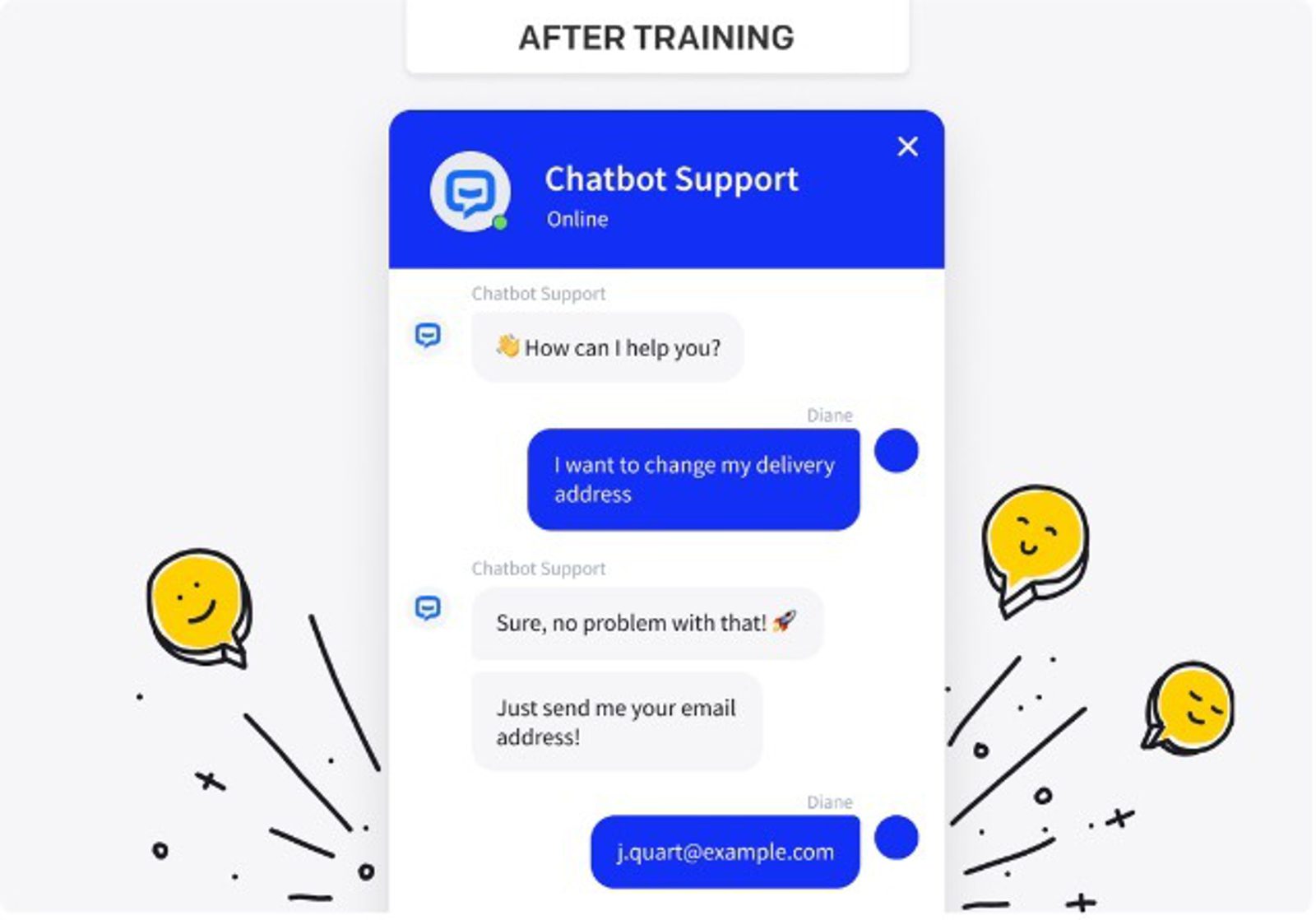
Key Features
- Integrates with ActiveCampaign so leads can be added to your CRM and marketing automations
- Customizable chat interface and widget
- Reporting and analytics
- Live chat options
Drift
Drift is a conversational marketing tool that gathers contact information from chatbot conversations on your website. Their chatbot features can help transform website visitors into leads for your marketing team. You can then turn those leads into customers using the Drift and ActiveCampaign integration.

Key Features
- Real-time reporting and analytics
- Visual chatbot builder
- Great for qualifying leads and collecting emails
- Easy transfers to live chat
- Send personalized videos and GIFs
- Enterprise-level pricing
Customerly
Customerly has transformed the chat experience, fixing traditional chatbots' pitfalls with our Conversational AI that replies instantly and accurately in any language, designed for easy setup.
Customerly offers a conversational experience with AI and humans.
Key Features:
- AI-driven responses utilizing existing knowledge bases, avoiding the looped conversations typical of standard chatbots.
- Instantaneous replies that maintain customer satisfaction without delay.
- Multilingual capabilities with automatic escalation, handling sophisticated tasks effortlessly
Glassix
Glassix offers a cutting-edge Conversational AI and Messaging Platform, leveraging the power of the renowned GPT-4 engine by OpenAI. With their seamless onboarding, Glassix provides ready-to-use chatbot templates suited for any industry, streamlining Sales, Support, Operations, and beyond.
Key features
- Low/No code chatbot builder
- Seamless handoff agent ->bot / bot ->agent
- One-click deploy chatbot script to all channels
- Ready-made chatbot templates
- Real-time reporting and analytics
- Rich media sharing
- Mobile app
LiveChat
LiveChat is brought to you by the same company as ChatBot, but it’s more aimed at customer support agents. Using LiveChat with ActiveCampaign will allow contacts to add themselves to your list easily. After chats, you can follow up with your contacts through newsletters, autoresponders, and more.
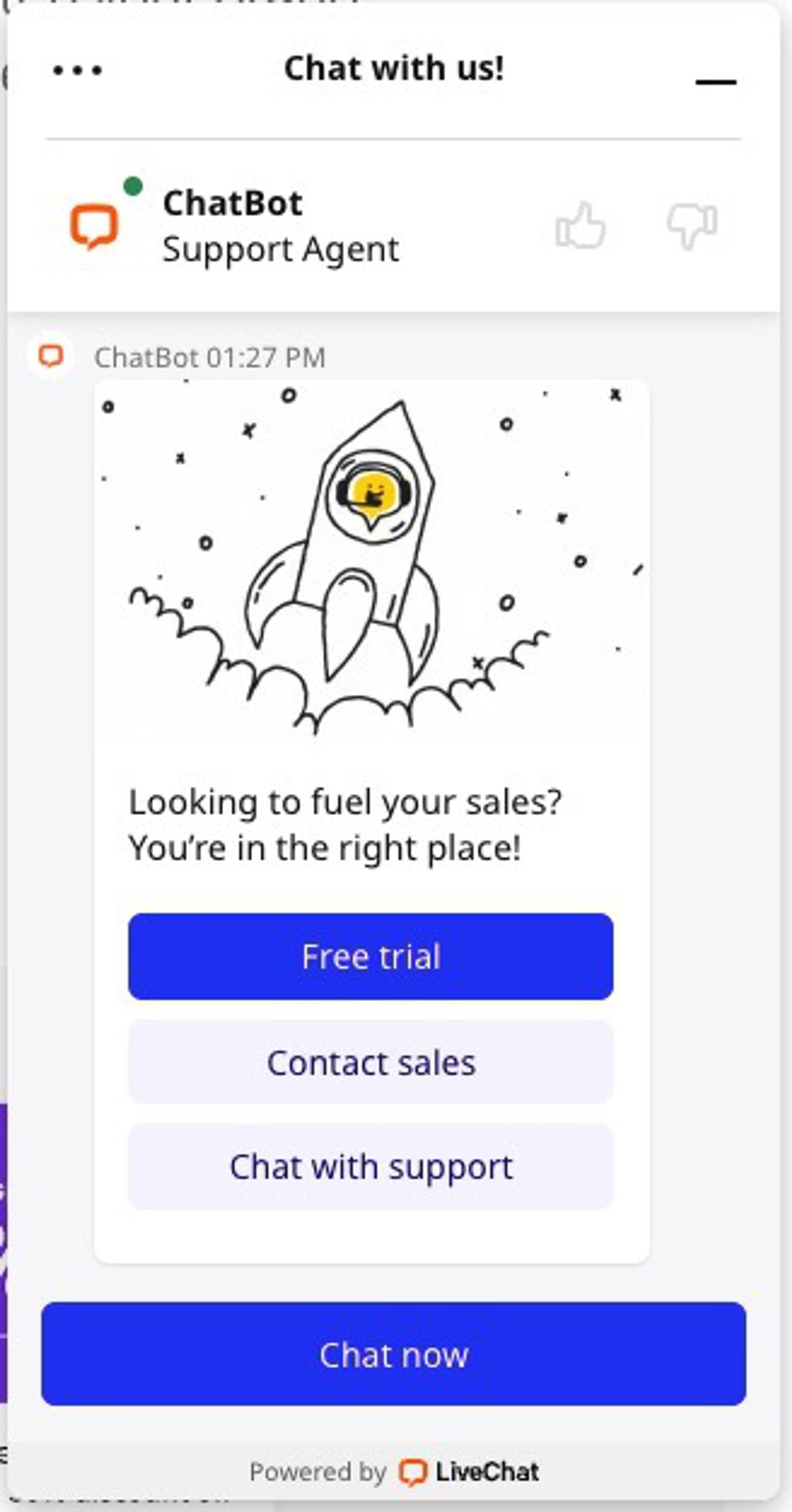
Key features
- Customizable chat widget and chat window options
- Multiple chat channels, including website, Facebook messenger, and Instagram
- Multiple plan tiers
- Ability to integrate ChatBot with LiveChat
Olark
Olark is a cloud-based live chat solution and chatbot software that integrates with ActiveCampaign’s customer relationship management platform, so you can easily sync up chat and sales data.
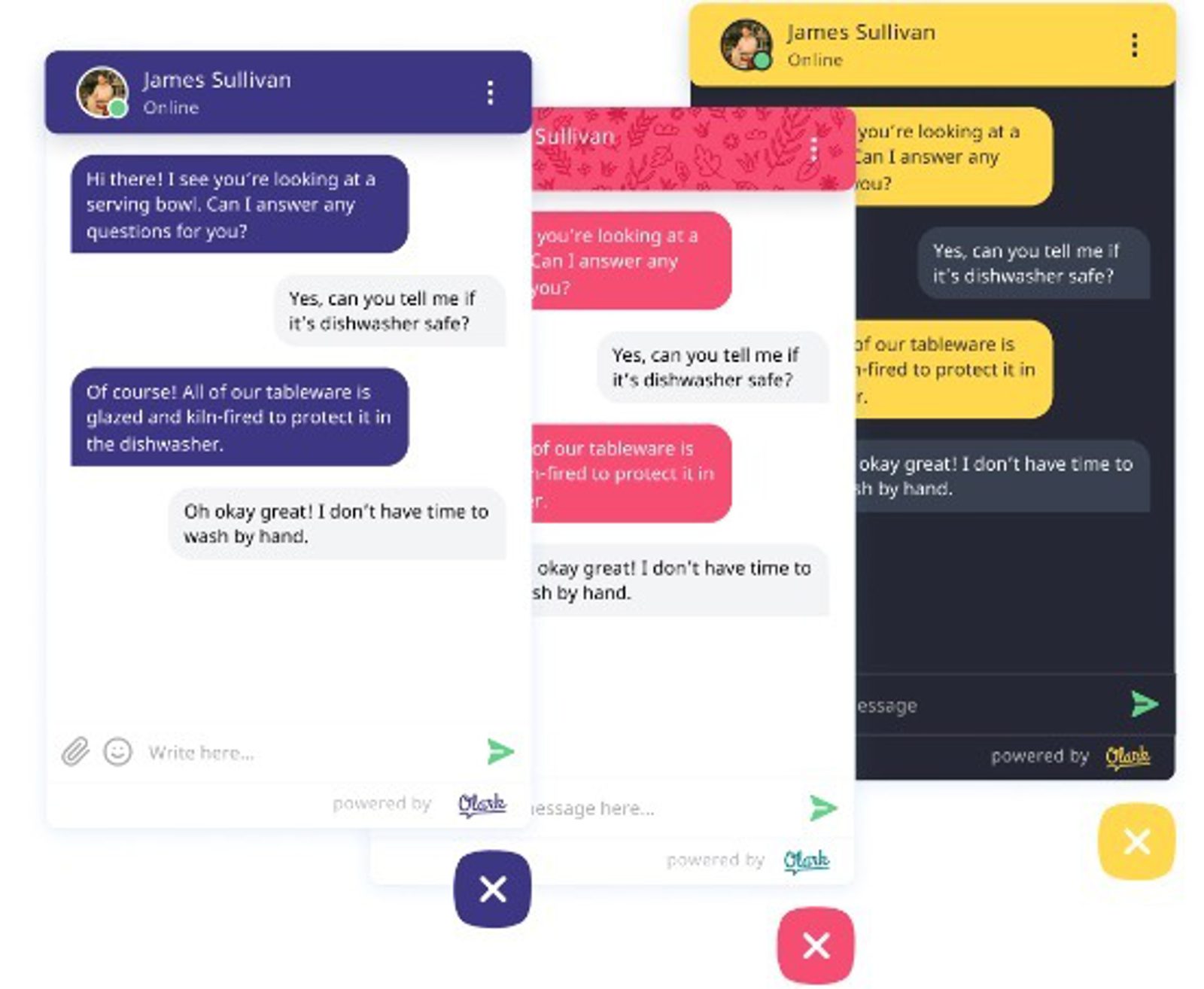
Key features
- Live chat features
- Customizable chat widgets
- Triggered messages
- Custom pre-chat forms
- Searchable chat transcripts
Freshdesk
Freshdesk is a customer support platform that offers a live chat for virtual agents along with a chatbot solution called Freshchat.
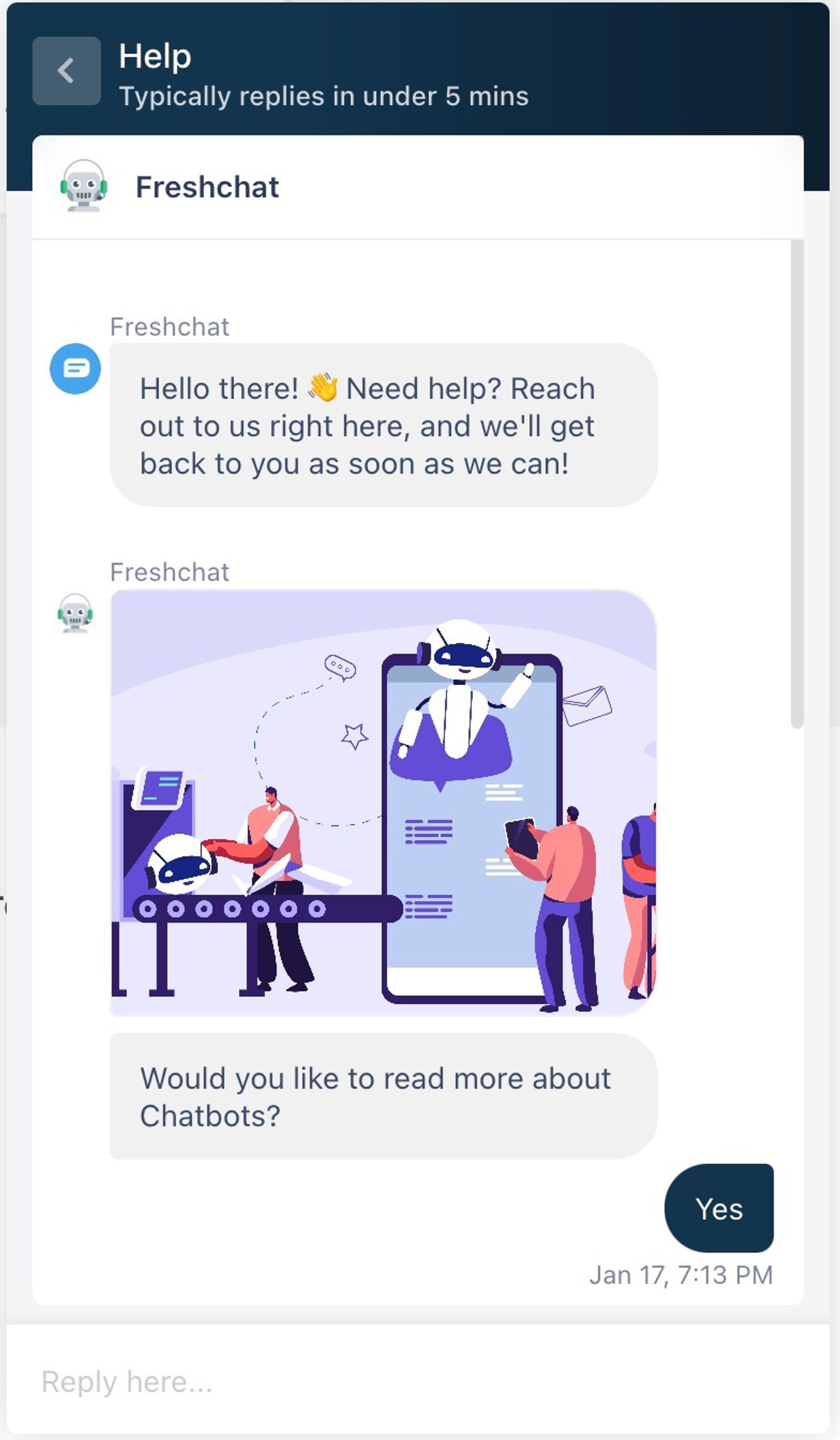
Key features
- Unified inbox across email, call, chat, and messenger apps
- Connect with ActiveCampaign’s CRM or ERP tools to automate advanced queries
- Proactive chat to engage with visitors
Tawk.to
Tawk.to is a free live chat software that lets you chat with the visitors on your website, respond to support tickets, organize contacts, and create a help center to empower customers to help themselves.

Key features
- Free forever plan
- Built-in knowledge base within the chat
- Handy shortcuts (canned responses)
- Answer chats from mobile devices
- Unlimited chat history
Intercom
Intercom is a conversational relationship platform to engage with your customers. With multiple ways to help customers within their chat, you can help visitors find what they need.

Key features
- Multiple options and designs to engage customers
- 24/7 automated support with Resolution Bot
- Share news, offers, and announcements in chat
- ActiveCampaign integration creates or updates a contact when a new email address is added
ManyChat
ManyChat is a direct chatbot app that automates interactive conversations in Instagram Direct Messages, Facebook Messenger, and SMS to grow your brand.
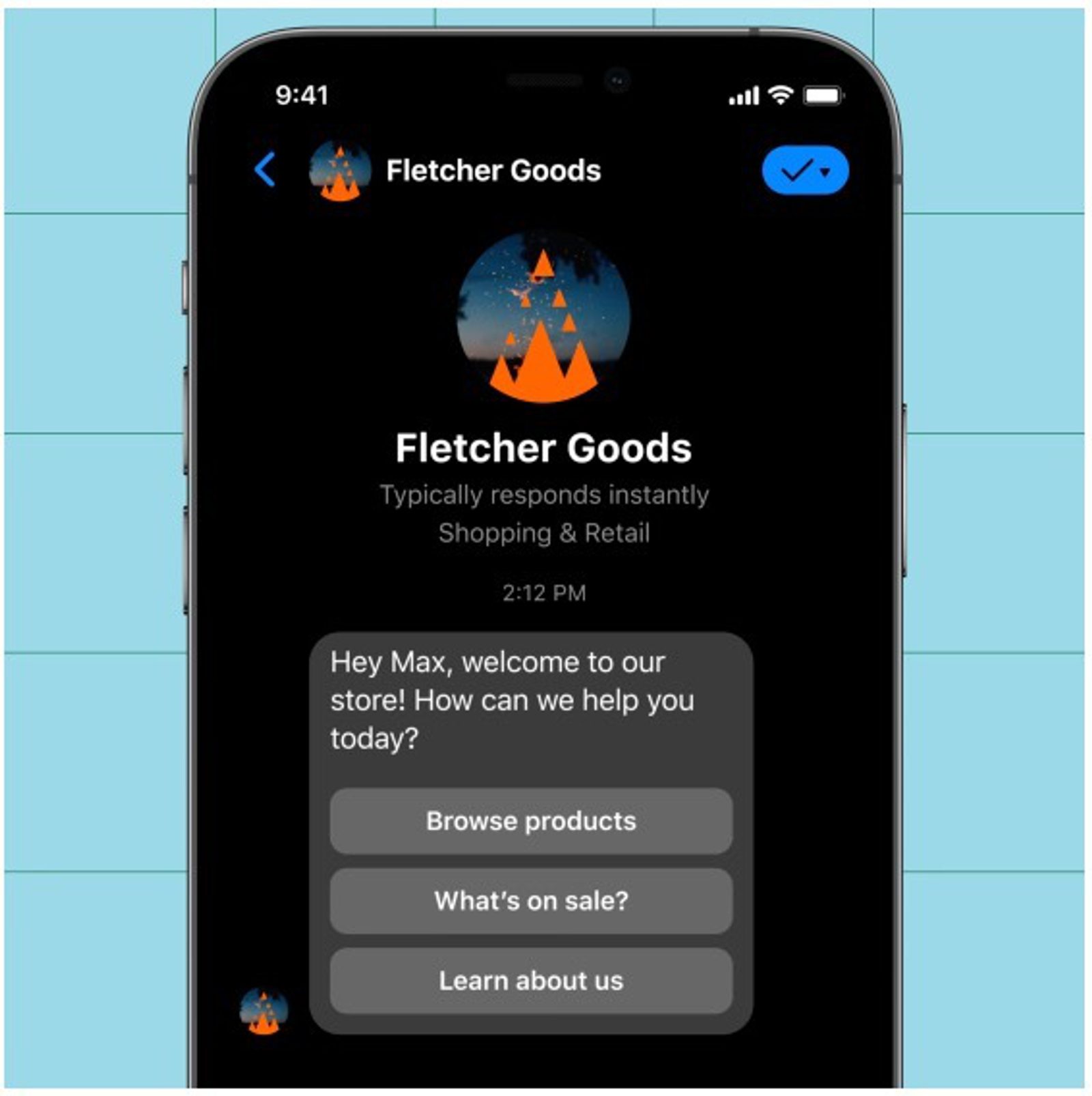
Key features
- Strong integration with Facebook chatbot messenger
- Add a subscriber from your ManyChat bot to the contact list in ActiveCampaign
- Built for sales and marketing
Gorgias
Gorgias is a helpdesk platform for ecommerce brands that offers features to turn support and engage customers through live and self-service chat.

Key features
- Ecommerce sales focused
- Helpdesk platform with chat functionality
- Automations to cut down on repetitive support tasks
Examples of chatbots
Ecommerce chatbot example: Steve Madden

Fashion brand and retailer Steve Madden uses a chatbot from Gorgias as a messaging channel to answer common customer questions about shipping and products. They also use it to answer questions about discounts by providing a coupon code in the chat.
Customer service chatbot example: Dollar Shave Club

Dollar Shave Club uses its chatbot to automate customer support service 24/7. With a rule-based chatbot, they direct users by providing options that answer most of the support questions that customers typically ask. Questions about order status or forgotten passwords can be handled without human support, saving resources and time.
Sales chatbot example: Drift
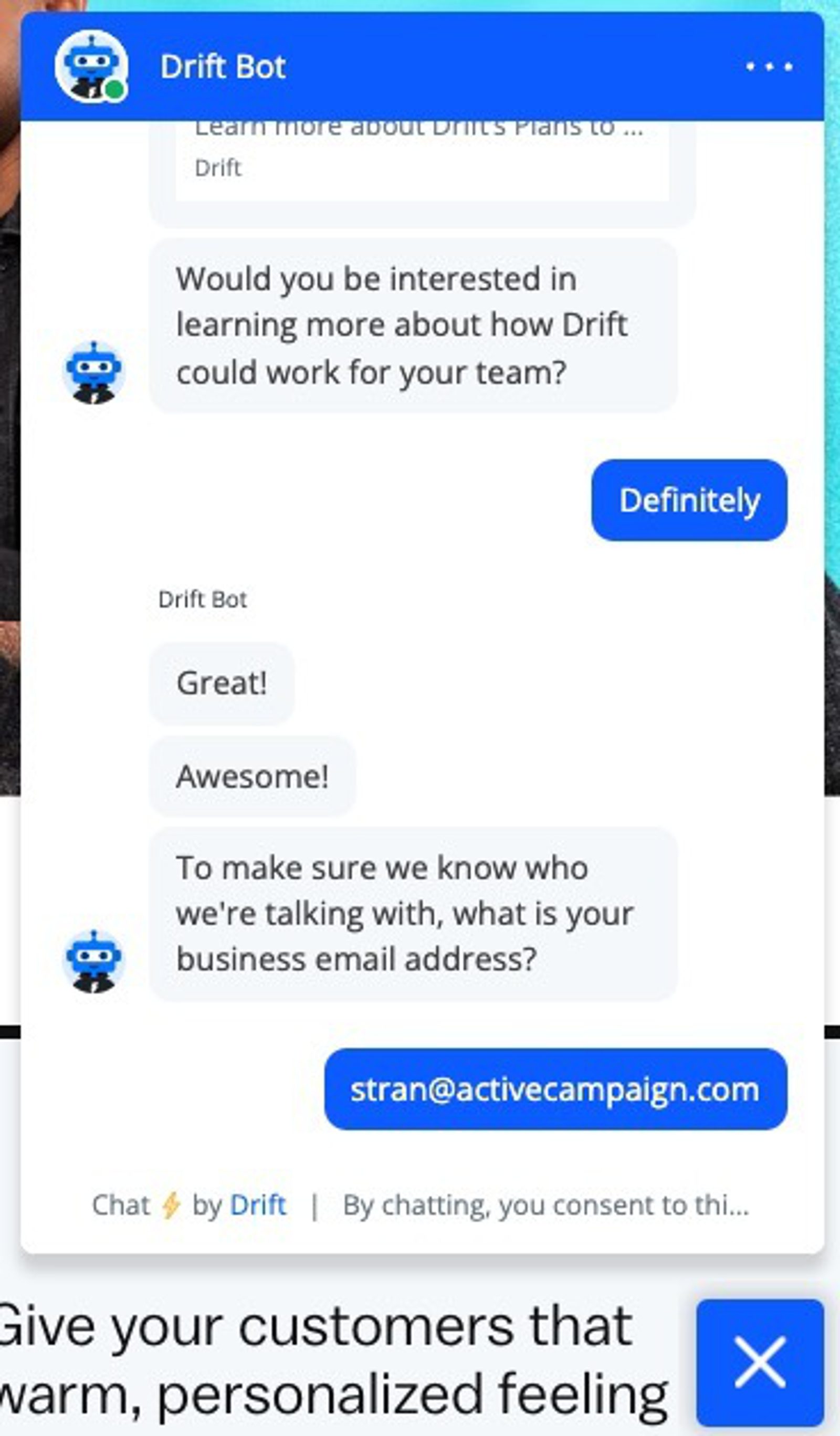
While it’s no replacement for an actual salesperson, chatbots can serve as virtual assistants. Chatbots can help sales teams qualify prospects and generate leads. Drift uses its own product to educate prospects, answer repetitive questions, and even book demo meetings for account executives.
Upgrade your marketing technology
Chatbots are powerful tools to improve your marketing and business. Customers today are comfortable using many types of channels to communicate with businesses, including chatbots. So if you want to expand your reach, add a chatbot to your larger marketing strategy.
When integrated with a marketing automation platform like ActiveCampaign, they can help automate marketing campaigns further and increase customer engagement. Ultimately, by using the ActiveCampaign platform to integrate chatbots into your marketing efforts, you can save time and cost, and increase customer engagement.
Start a trial today and give it a try for yourself.






